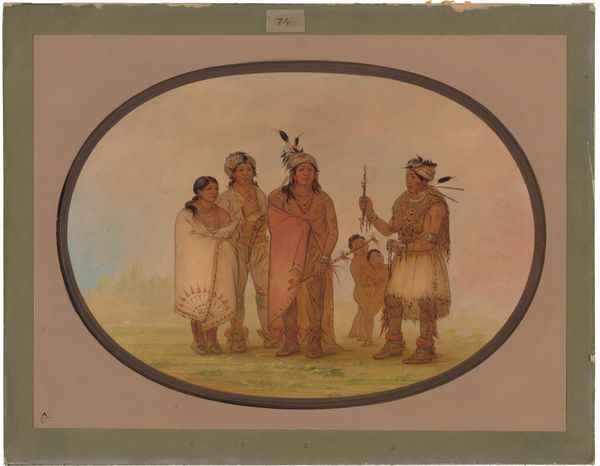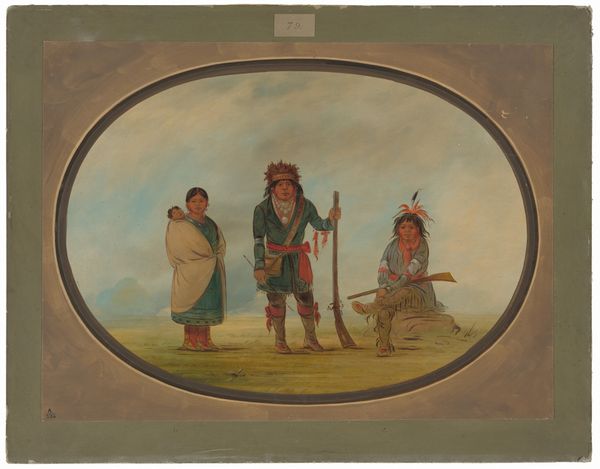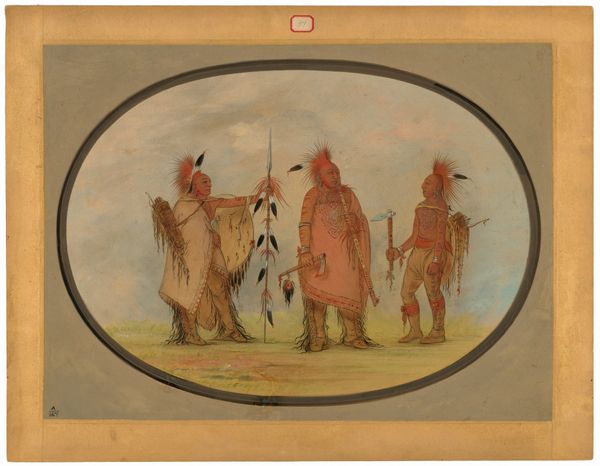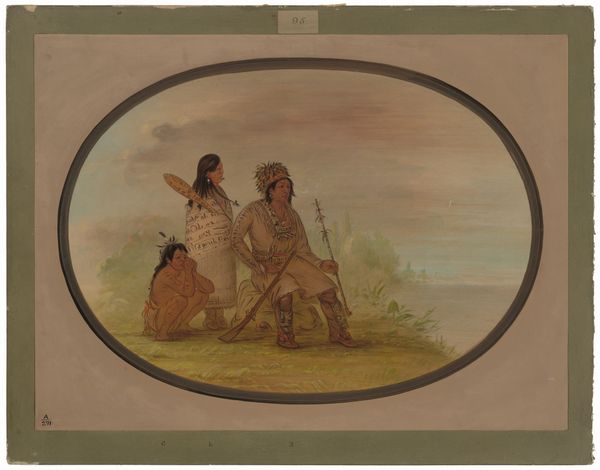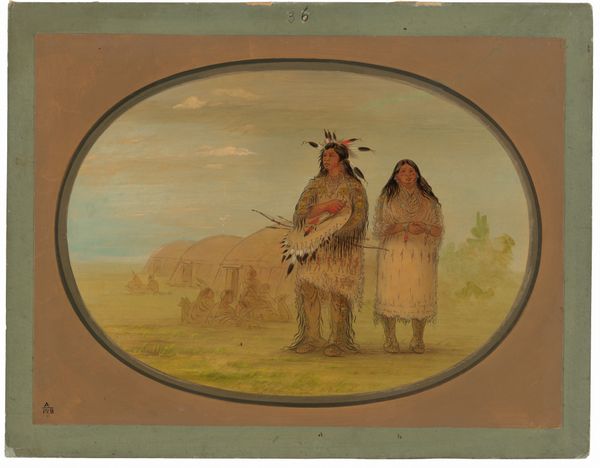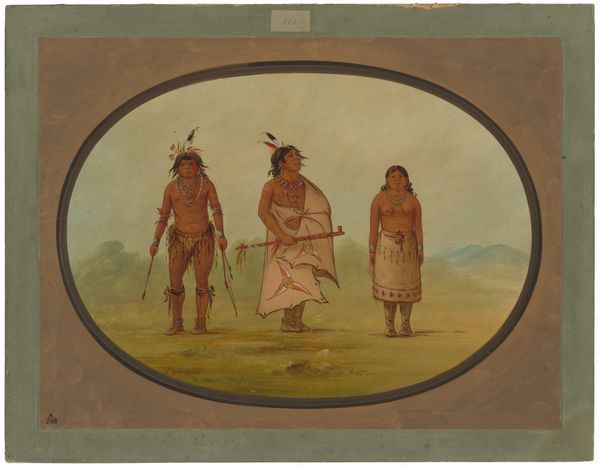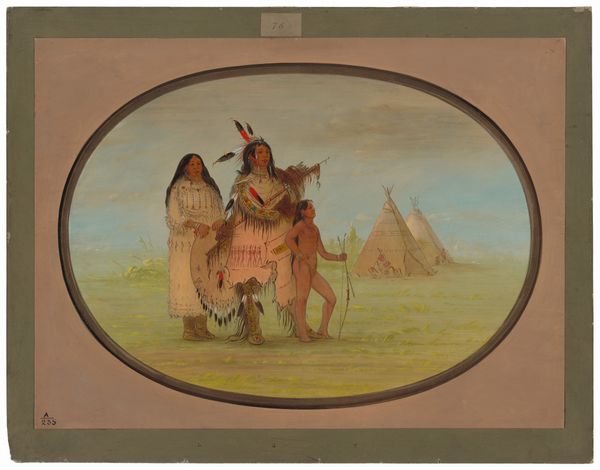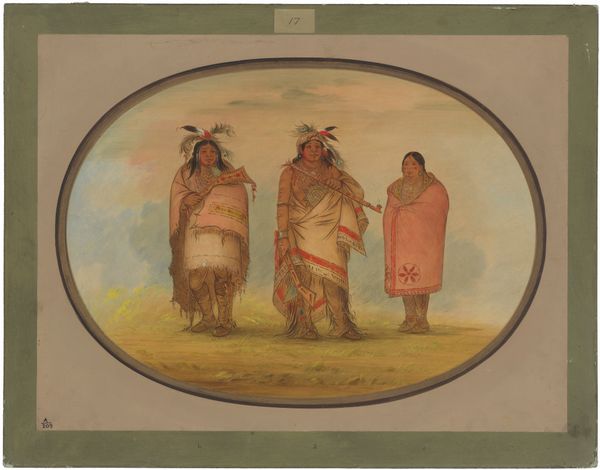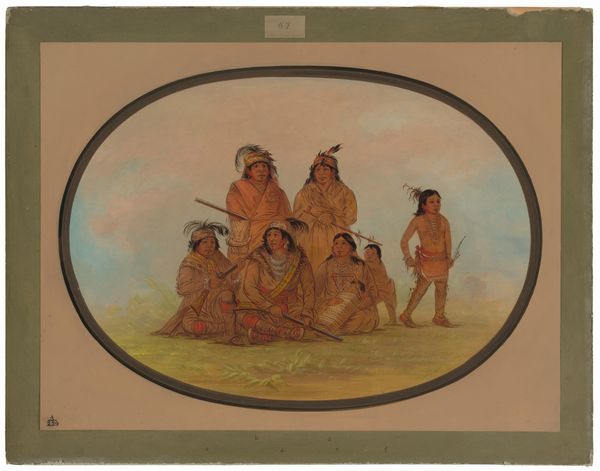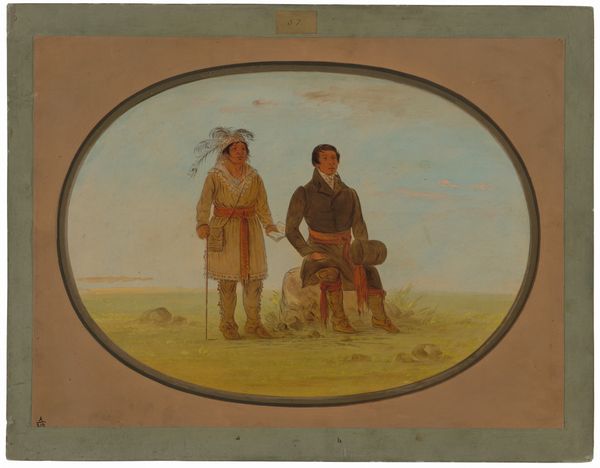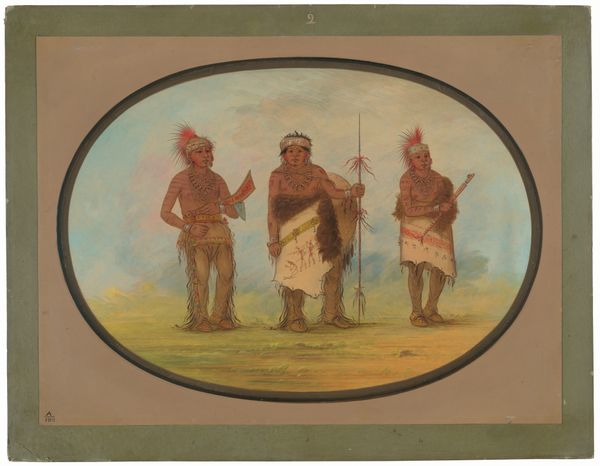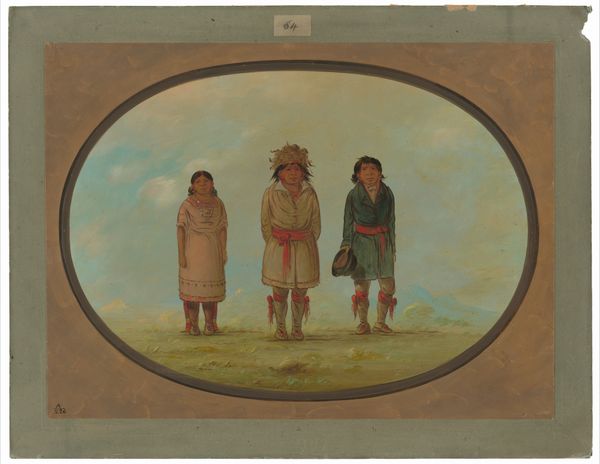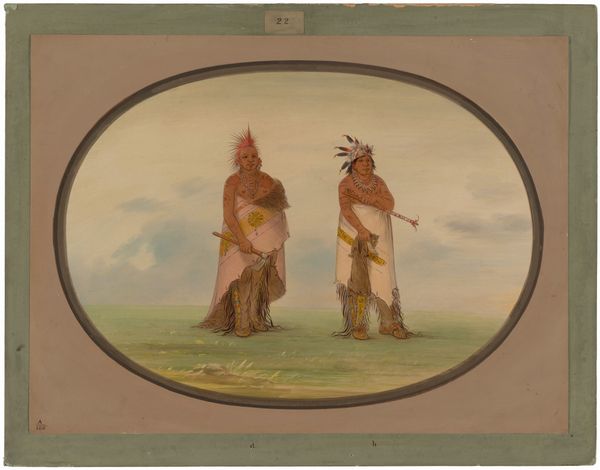
gouache
#
portrait
#
water colours
#
gouache
#
watercolor
Dimensions: overall: 46.6 x 61.9 cm (18 3/8 x 24 3/8 in.)
Copyright: National Gallery of Art: CC0 1.0
Curator: "Copper Chief, His Wife, and Children," a watercolor work created by George Catlin between 1855 and 1869. What stands out to you right away? Editor: Well, immediately it's the framing that gets me—this deliberate oval feels like looking into a different world, a tableau vivant almost. It lends a sense of careful preservation to this image of a family group. Curator: Absolutely. Consider Catlin’s body of work—it's charged with his documented travels across the American West. These watercolors often position indigenous people within a historical context shaped by expansionism. He romanticizes, perhaps, but what do you make of the symbols here? Editor: The symbols speak to lineage, rank, and a particular cultural moment. The father's headdress is an emblem of his authority. His regalia contrasts with the everyday attire, hinting at a world in flux, on the precipice of profound change, as their way of life begins to shift, forced by colonizers. Curator: Yes, and thinking about the mother carrying a swaddled infant, while the younger child stands by his father--these familial motifs touch upon themes of identity, belonging, and continuation. It's about the legacy of culture passed down amid violent societal shifts. It’s about resistance in simply existing. Editor: Right, because in terms of icons, family is a persistent one: a source of solace but also a source of incredible identity strength. What's striking to me, though, is how this representation lives on, continuing to carry the weight of our colonial past in museums. This wasn’t only seen as history then, but perhaps more so as evidence of that expansion. The family group rendered is thus, more poignantly, carrying an entire symbolic world within them. Curator: Seeing them presented in this "window" as you observed it at the beginning emphasizes how we viewed their existence: observing, capturing and presenting them for display and consumption. It's hard not to bring that to bear. Editor: Precisely. The emotional landscape woven into the watercolor deepens the painting. I’ll be reflecting on that long after we walk away. Curator: I completely agree. I will be thinking about that cultural shift. There's something about bearing witness through these watercolors and realizing how our current narratives stem from Catlin's documentation.
Comments
No comments
Be the first to comment and join the conversation on the ultimate creative platform.
